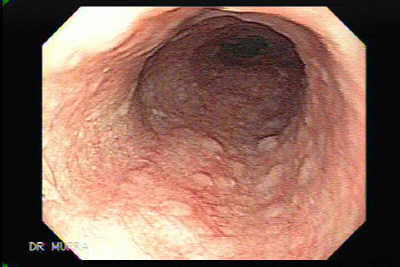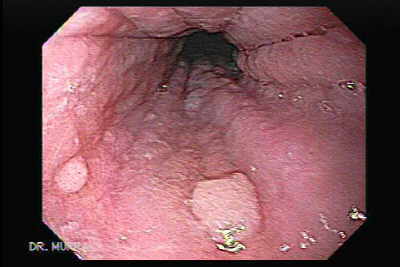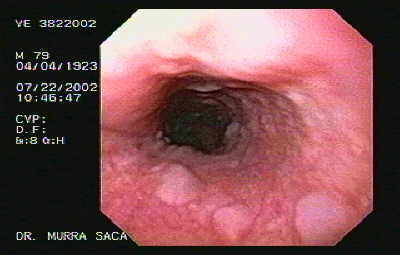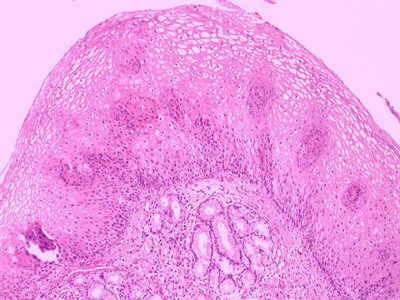 |
|
 |
Glycogenic acanthosis of the esophagus
Glycogenic acanthosis of the esophagus is a common benign entity, characterized by multifocal plaques of hyperplastic squamous epithelium with abundant intracellular glycogen deposits.
For more endoscopic details, download the video clip by clicking on the endoscopic image. Wait to be downloaded completely, then Press Alt and Enter for full screen.
All endoscopic images shown in this Atlas contain video clips. We recommend seeing the video clips in full screen mode.
|
|
 |
Glycogenic Acanthosis of the Esophagus.
Glycogenic acanthosis of the esophagus is a common benign entity, characterized by multifocal plaques of hyperplastic squamous epithelium with abundant intracellular glycogen deposits. At esophagoscopy or on autopsy specimens these lesions appear as slightly raised grey-white plaques which are usually 2-10 mm in diameter and may be confluent. Glycogenic acanthosis may be related to gastroesophageal reflux.
Pubmed: Diffuse esophageal glycogenic acanthosis: anendoscopic marker of Cowden's disease.
|
|
|
 |
Esophageal Glycogenic Acanthosis.
This condition is asymptomatic and an incidental finding. These nodules or plaques result from accumulation of excess glycogen in mature squamous cells of the upper epithelium.
|
|
 |
Glycogenic acanthosis affects the prickle cell layer of the
squamous epithelium of the esophagus. these cells are
thickened and packed with glyocgen.
There is no
associated inflammatory response and no cellular atypia.
|
|
|
|
|
|
|